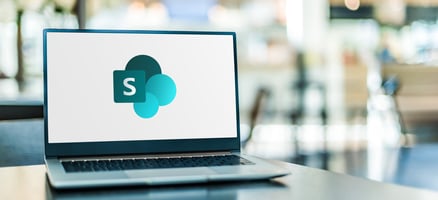Boost Your Productivity with Email Templates in Outlook
Learn how to create email templates in Outlook to boost your productivity and efficiency at work.
Email Tips
Several features and tools are available in Microsoft 365 to help you work smarter and more efficiently. One of these features is the ability to create email templates in Outlook. By using email templates, you can save time and streamline your communication process.
To create an email template in Outlook, follow these steps:
- Open Outlook and click the "New Email" button to compose a new email.
- In the email window, write the content you want to save as a template. This can include the subject line, body text, and any attachments you want to include.
- Once you have written the email content, click the "File" tab and click the "Save As" option.
- In the "Save As" dialogue box, choose a location to save the template, such as your "Templates" folder.
- Name the template and choose the "Outlook Template" (*.oft) file format.
- Click "Save" to save the template.
Now, whenever you want to use the email template, follow these steps:
- Click on the "New Items" button in the Outlook toolbar.
- Select "More Items" and then "Choose Form" from the dropdown menu.
- In the "Choose Form" dialogue box, select the "User Templates in File System" option.
- Browse to the location where you saved the email template and select it.
- Click "Open" to open the template.
- The email template will open in a new window. In this window, you can customize it with recipient names, additional text, or any other changes you need to make.
- When you're ready to send the email, click on the "Send" button.
Using Outlook email templates can save time and ensure consistency in your communication. Whether you need to send a standard meeting invitation, respond to a common question, or schedule a follow-up email, templates can help you work more efficiently.
Meeting Tips
In addition to email tips, Microsoft 365 also offers several Outlook features to help you boost productivity during meetings. Here are some tips:
- Use the scheduling assistant in Outlook Calendar: This feature allows you to quickly see when people are available and easily schedule a meeting without sending multiple emails back and forth.
- Use transcription and recordings: With this feature, you can capture the critical content of a meeting, ensuring you don't miss any important information. You can review the transcription or recording later to refresh your memory.
- Shorten meetings by configuring your Outlook calendar: By automatically shortening meetings by a few minutes, you can ensure that they end on time, allowing you to stay on schedule and maximize your productivity.
- Use live captions for translation: If you have participants who don't speak the same language as the speaker, live captions can help everyone understand what's being said in the meeting. It promotes effective communication and inclusivity.
- Use chat in meetings: Instead of interrupting the speaker or derailing the meeting, you can use the chat feature in Microsoft Teams to ask questions or provide feedback. This helps maintain the flow and focus of the meeting.
By utilizing these meeting tips, you can enhance collaboration, improve communication, and make the most out of your meetings.
Other Tips
Apart from email and meeting tips, there are other features in Microsoft 365 that can further boost your productivity and efficiency. Here are some additional tips:
- Use Teams Chats instead of email: Microsoft Teams offers a chat feature that lets you quickly communicate with people on your team without needing multiple back-and-forth emails. It promotes real-time collaboration and faster decision-making.
- Use Task Tracker—Planner—Tasks: This feature allows you to keep track of tasks and projects in one place, making it easier to see what needs to be done and when. It helps you stay organized and prioritize your work effectively.
- Ensure well-organized video, audio, and lighting for meeting rooms and home offices: Whether you're in a physical meeting room or working from home, having clear video, audio, and proper lighting is crucial for effective communication. Make sure your setup allows everyone to see and hear you clearly.
By implementing these additional tips, you can optimize your workflow and create a more productive work environment.




